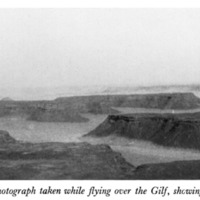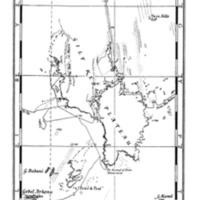Gilf Kebir
Dublin Core
Title
Gilf Kebir
Subject
The Gilf Kebir plateau is located in the Libyan/Egyptian Desert. It is a point of interest for Ladilaus de Almasy, who believes that the Gilf Kebir Plateau contains the mythical Zerzura oasis. Almasy remembers the period in of the 1930’s when he and others such as Madox and the Clifton’s explore the Gilf Kebir Plateau. The novel describes
“In 1930 we had begun mapping the greater part of the Gilf Kebir Plateau, looking for the lost oasis that was called Zer-zura. The City of Acacias. We were desert Europeans. John Bell had sighted the Gilf in 1917. Then Kemal el Din. Then Bagnold, who found his way south into the Sand Sea. Madox, Walpole of Desert Surveys, His Excellency Wash Bey, Casparius the photographer, Dr. Kadar the geologist and Bermann. And the Gilf Kebir— that large plateau resting in the Libyan Desert, the size of Switzerland, as Madox liked to say— was our heart, its escarpments precipitous to the east and west, the plateau sloping gradually to the north. It rose out of the desert four hundred miles west of the Nile”. (Ondaatje, Michael. The English Patient (Kindle Locations 1642-1647). McClelland & Stewart. Kindle Edition.)
The exploration of the Gilf Kebir mirrors the real expeditions that Lazlo Almasy made in the 1930s. In H. W. G. J. Penderel’s lecture given in January 1934 to the Royal Geographical Society, he describes a very similar expedition to Ondaatje’s fictionalized version. The expedition’s group is described
“The members of the expedition were Count Ladislaus de Almasy, Kadar, a geographer and geologist of the University of Budapest, Casparius, photographer and cine-photographer, Dr. Bermann, whom you will hear to-night, and myself. The native personnel consisted of Sudanese drivers and one cook. For our transport we had selected A-type Ford cars with box” (Penderel, Geographical Society, 453).
The Gilf Kebir is very much the place where Almasy’s mind usually wanders. It is through his morphine induced storytelling that he accounts these years he spent exploring and mapping the Egyptian/Libyan Desert.
“In 1930 we had begun mapping the greater part of the Gilf Kebir Plateau, looking for the lost oasis that was called Zer-zura. The City of Acacias. We were desert Europeans. John Bell had sighted the Gilf in 1917. Then Kemal el Din. Then Bagnold, who found his way south into the Sand Sea. Madox, Walpole of Desert Surveys, His Excellency Wash Bey, Casparius the photographer, Dr. Kadar the geologist and Bermann. And the Gilf Kebir— that large plateau resting in the Libyan Desert, the size of Switzerland, as Madox liked to say— was our heart, its escarpments precipitous to the east and west, the plateau sloping gradually to the north. It rose out of the desert four hundred miles west of the Nile”. (Ondaatje, Michael. The English Patient (Kindle Locations 1642-1647). McClelland & Stewart. Kindle Edition.)
The exploration of the Gilf Kebir mirrors the real expeditions that Lazlo Almasy made in the 1930s. In H. W. G. J. Penderel’s lecture given in January 1934 to the Royal Geographical Society, he describes a very similar expedition to Ondaatje’s fictionalized version. The expedition’s group is described
“The members of the expedition were Count Ladislaus de Almasy, Kadar, a geographer and geologist of the University of Budapest, Casparius, photographer and cine-photographer, Dr. Bermann, whom you will hear to-night, and myself. The native personnel consisted of Sudanese drivers and one cook. For our transport we had selected A-type Ford cars with box” (Penderel, Geographical Society, 453).
The Gilf Kebir is very much the place where Almasy’s mind usually wanders. It is through his morphine induced storytelling that he accounts these years he spent exploring and mapping the Egyptian/Libyan Desert.
Description
“The name that still filled our mouths was Gilf Kebir. Somewhere in the Gilf nestled Zerzura, whose name occurs in Arab writings as far back as the thirteenth century" (Ondaatje, 142)
Files
Citation
“Gilf Kebir,” Digital History - Histoire Numérique, accessed January 10, 2026, http://omeka.uottawa.ca/jmccutcheon/items/show/116.


